Planting the Vineyard, Part I
With the trellis posts finally in the ground, we were finally ready to plant. And not a moment too soon.
When we arrived in Afton on Friday evening, March 30, we had 50 dormant vines waiting for us: 25 Petit Manseng from Vintage Nurseries in Wasco, California, and 25 Viognier from Sunridge Nurseries, Bakersfield, California. The largest number of vines we had ever planted before was seven, and we weren’t sure how long it would take to get
these vines in the ground, or even if we’d be able to get it done by the end of the weekend. But we had another 100 vines set to arrive the following weekend, which meant we didn’t have much of a choice. We decided to plant the Petit Manseng first, and prepared them by putting them in a bucket of water to soak overnight.
In the morning, we inspected the vines to see if they looked healthy. This was kind of like the time in high school when my car wouldn’t start as I was taking my date home. I opened the hood, looked inside as though I knew what I was doing, and just prayed it would start when I got back in the car. It did start up, but not because of anything I had done. I had just been putting on a good show.
Inspecting dormant vines by sight is kind of like that. A dormant vine
looks like a small stick with a tangle of thin roots growing out of the bottom. You can bend them a bit to make sure the graft union doesn’t snap, but I’m pretty sure the dead ones look about the same as the live ones. So all of the intense squinting I did as I eyeballed the vines probably didn’t amount to much more than a good show.
However, on the advice of one of the the viticulture experts we follow most closely, WineMaker magazine columnist Wes Hagen of Clos Pepe Vineyards, we took the additional step of cutting one in half to make sure there was green tissue inside and no dark spots that might indicate disease. It was hard to give up what amounted to fully four percent of the Petit Manseng, especially knowing that there was a strong likelihood that another one or two vines would probably die in the first year. Still, it seemed best to know that the vines had survived the trip from California and the day or more wait on the porch. (No tracking information, so it was hard to know when they had actually arrived.)
The vine looked nice and green inside, with no sign of disease, so bright and early Saturday morning we carried our fully soaked vines down the hill from the house to the vineyard, along with shovels, four-foot bamboo stakes and a specially-marked small spade that could be used to move earth around and also measure up to 12 inches. The tool was very useful, especially in the early stages of planting, when we were at our most anxiety-ridden state of nervous obsession. Part of me recognized that vines have been growing since the beginning of recorded history, and doing quite nicely with much less care than we were going to give them. But another part of me was sure we were going to kill every single vine, leaving us with empty trellises for the neighbors to talk about while on their morning walks.
But we did worry obsessively over those first vines as they went into the ground. We were aiming to plant them at a depth that would leave the graft union — the little bulge where the scion of the vine varietal is joined with the rootstock — four inches above ground.
We had a couple of reasons for going with four inches, which I
sometimes referred to as “about four inches,” and other times as “three to four inches,” and every now and then as “four or more inches,” depending upon my degree of confidence in our decision about the planting depth.
First, the ground had been ripped to a depth of about three feet. The ripping is intended to give the roots an easier path down in their search for water, which is a good thing. However, since the ground has been softened, it’s possible for the vines to sink as they settle in, and of course it’s always possible for soil to build up around them over time. A little settling is fine, but if the scion reaches ground level, the vines will develop their own roots, separate from the grafted rootstock. Those new roots, unfortunately, are not resistant to phylloxera, the root
louse that destroyed most of Europe’s vineyards in the 19th century. That disaster, of course, is what gave rise to the practice of grafting European vines onto American rootstock in the first place.
So, why not put the graft union five inches above ground, or even six, just to be sure? Wes Hagen and others recommend four to six inches, but in the first few years, we’ll be mounding dirt over the graft unions after the growing season to protect them from winter freezes, and the amount of dirt needed to form a mound grows almost exponentially as the height of the hill increases. And trust me, digging dirt for the mounds is almost as much work as digging the holes.
In any event, we settled on four inches, and decided that if we ended up with only three inches through faulty measurement, that would be okay, as would five inches. And I have to say, there doesn’t seem to be a consensus on this issue. Our classes, the books we’ve read, and even the instructions that came with the vines, all varied in their recommendations, with some saying two to four inches, others urging four to six, and still others falling somewhere in between.
We agreed on a division of labor, in which I would dig the holes and my wife, the Vineyard Goddess, would measure and plant the vines. It seemed perfect, and we thought we’d be done by noon. But nothing ever goes thatsmoothly. In our quest for perfection — okay, our nagging concern that we were about to destroy the vineyard — we decided to spend some time pondering which of the two bumps we observed
toward the top of the dormant vine was actually the graft union. Looking at the nearby pic of a planted vine, it seems obvious now, but we decided to spend part of the morning looking at pictures of dormant grafted vines and worrying.
Once we got started, our division of labor worked just fine. I dug the holes, the Vineyard Goddess filled them with water and then planted the vines once the water had drained. It was probably the most sensible division of labor possible. I did the rough work, digging holes that looked about right, and she did the precision piece, measuring their depth and then adding or subtracting soil until they
were perfect. She then trimmed an inch or so off the bottom of the roots, and pruned away any side roots. Then, once the water had drained, she planted the vine, spreading the roots out at the bottom of the hole and pushing soil back in to fill the hole.
It was quite a successful day. We got all 25 vines in the ground, and I got a head start on digging holes for the 25 Viognier that we would plant the next day.
I’ll talk a bit about the Viognier and the two red varietals we planted a week after that in a later post, but first I’ll acknowledge what I’m sure is
obvious from the dates I cited at the top of this article — I’ve fallen woefully behind on updating ProjectSunlight over the past three weeks.
There’s a reason for that, and it has a lot to do with the subject matter. It turns out that planting 50 vines by hand is a lot of work, and by the end of the weekend, I had just enough energy left to drive home to Fairfax, and get ready for work the next day. And no, that weekend’s work didn’t just make me stronger for the next weekend. The next 100 vines were at least twice as hard as the first 50, and probably more. I spent the next week at work wondering exactly how
much ibuprofen it would take to make the muscle aches go away, and not quite finding the energy to write.
Someone told me once that lots of people think they want a vineyard, but after spending a day working in one, they realize that what they really want is a wine cellar. I want both, but after planting 150 vines over two weekends, I do have a much greater appreciation for why some choose the wine cellar.
Category: All Posts, Viticulture

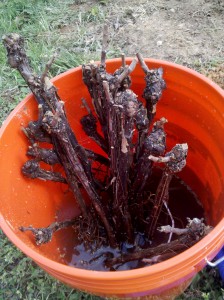
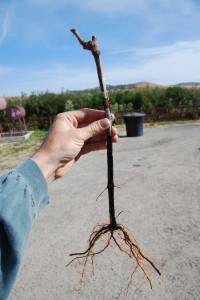
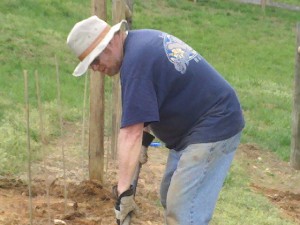
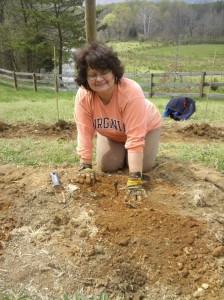

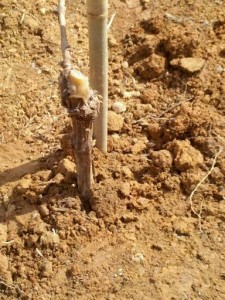

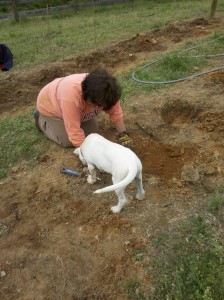



Dear Bob Garsson,
Thanks, on a related note, Grapevines grow best in temperate climates between 30 and 50 degrees latitude in the northern hemisphere and 30 and 40 degrees in the southern hemisphere. The region, or terroir (French for soil), is descriptive of the natural environment of the vineyard to include the climate, topography, soil, and the actual site. The same variety of grape grown in different regions will vary significantly because of the different environmental conditions. For example, the Carneros wine region was split from the Napa Valley appellation in California because the winds from the San Francisco Bay made the climate much cooler than Napa even though the soil and topography is very similar. Pinot Noir grapes grown in this region are much more complex that those several miles away in Napa.
Catch you again soon!
<a href=http://